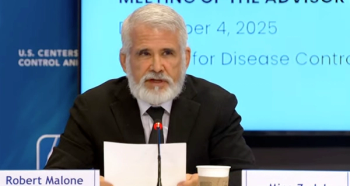
Study: Small bump in physician retirements in worst month of pandemic
April 2020 saw more than 1 percent of doctors retire.
Fears of mass retirements due to the COVID-19 pandemic may have been overblown.
According to
The impact of the pandemic varied by the characteristics of the physician with older physicians being less likely to return after a practice interruption than younger physicians,1.3 percent and 0.34 percent respectively. Female physicians, specialists, physicians in small practices, physicians not practicing in a location with a health professional shortage, and those in metropolitan areas saw much greater practice interruptions in April 2020 than in 2019 but typically had higher rates of return, according to the study.
“The pandemic appears to have impeded return to practice more for older physicians than for younger physicians, consistent with anecdotal reports and survey findings regarding intent to close practices, retire, or otherwise transition away from clinical medicine,” the study says.
The researchers reached their conclusion by analyzing Medicare claims for 100 percent of fee-for-service beneficiaries from Jan. 1, 2019, to Dec. 30, 2020. They defined practice interruptions as months where a physician who had previously billed Medicare did not bill Medicare and an interruption with a return was defined as when a doctor restarts billing Medicare within six months, according to the study.
Newsletter
Stay informed and empowered with Medical Economics enewsletter, delivering expert insights, financial strategies, practice management tips and technology trends — tailored for today’s physicians.















